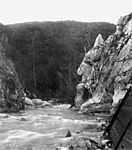California's 34th congressional district

California's 34th congressional district is a U.S. congressional district in California. Located in Los Angeles County, the district is represented by Democrat Jimmy Gomez. Its previous U.S. representative, Democrat Xavier Becerra of Los Angeles, resigned January 24, 2017, to become attorney general of California. Representative Gomez won a special election on June 6, 2017, beating fellow Democrat Robert Lee Ahn to replace Becerra. He was later sworn in as the district's U.S. representative on July 11, 2017.The district is almost entirely within the City of Los Angeles, and includes the following neighborhoods in Central, East, and Northeast Los Angeles: Boyle Heights, Chinatown, City Terrace, Cypress Park, Downtown Los Angeles, Eagle Rock, El Sereno, Garvanza, Glassell Park, Highland Park, Koreatown, Little Bangladesh, Little Tokyo, Lincoln Heights, Montecito Heights, Monterey Hills, Mount Washington, and Westlake.
Excerpt from the Wikipedia article California's 34th congressional district (License: CC BY-SA 3.0, Authors, Images).California's 34th congressional district
Buena Vista Drive, Los Angeles Elysian Park
Geographical coordinates (GPS) Address Nearby Places Show on map
Geographical coordinates (GPS)
| Latitude | Longitude |
|---|---|
| N 34.074722222222 ° | E -118.22833333333 ° |
Address
Buena Vista Drive 507
90012 Los Angeles, Elysian Park
California, United States
Open on Google Maps








